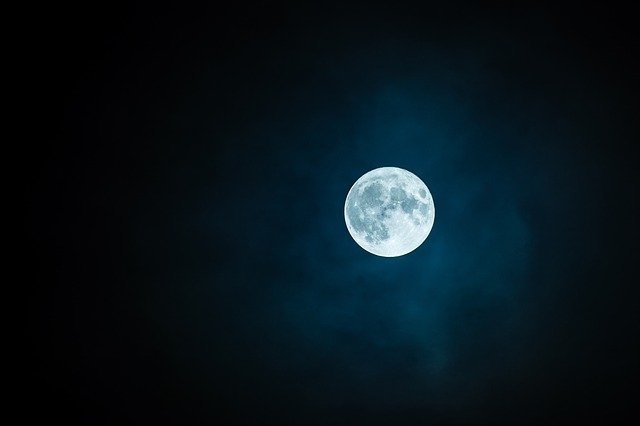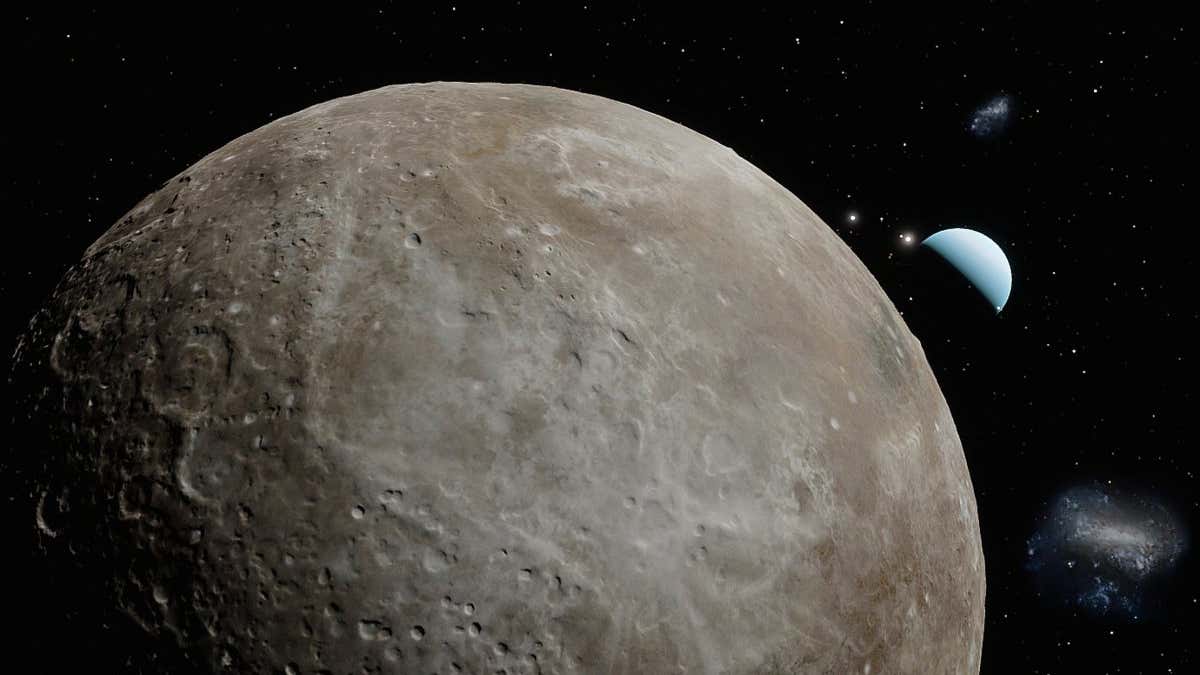*This post may contain affiliate links. This means we may make a commission if you purchase an item using one of our links*
The main differences between the Moon and Titania is that the Moon is bigger with a diameter of 3,474.8km while Titania’s diameter is 1,576.8km, Titania orbits Uranus while the Moon orbits Earth and Titania may water under its surface is far likely to have any.
For a more detailed breakdown of the Moon and Titania along with their similarities and differences, continue reading as it will be delved into in more depth below.
What Is The Moon?
Table of Contents

The moon is the gray celestial being that orbits our Earth. It is also tidally locked to Earth meaning that we only see one side of it at any time in our sky.
It takes the moon roughly 27 days to complete an orbit around Earth, which it does in an elliptical pattern. The Moon’s axial tilt is very straight at 1.5 degrees. As a result of the tidally locked status along with the effects that Earth has on its general rotational patterns, it takes the Moon roughly 29.5 days to complete a day.
In regards to its temperature, it fluctuates where it can be really hot at 127 degrees Celsius when the Sun is shining on it and to -173 degrees in areas where the Sun does not strike it. It’s core on the other hand is far hotter ranging between 1,327 to 1,427 degrees Celsius.
This is as a result of the lunar entity’s extremely thin to practically non-existent atmosphere, which not only results in these massive temperature shifts but, is also the reason why it has over 100,000 craters on its surface.
Speaking of the Moon’s surface, the entity is mostly made of rocks, iron, magnesium just like most of the other moons and terrestrial based planets in our solar system.
It is among the bigger moons in our solar system with a diameter of 3,474.8km and a mass of 7.35 × 10^22 kg, which actually places it fifth amongst all moons in our solar system and would also make it bigger than the dwarf planet Pluto.
Despite all the advancements in technology, the last time a manned mission was made to the Moon was on the Apollo 17 way back in December 1972 and no further missions have been done since, possibly as result of the political agendas behind the numerous countries vying for opportunities that we don’t know of.
What Is The Moon Titania?

Titania is the biggest of Uranus’s moons, with a circumference of 4,956km and a diameter of 1576.8km.
The high density of this moon suggests that it most likely formed from a collection of dust and debris leftover from the formation of Uranus or from the debris created in the collision that reportedly tilted Uranus onto its side. As a result Titania has a mass of 3.4 × 10^21 kg.
First discovered on 11th January 1787 (the same day as the discovery of Oberon, the second biggest moon of Uranus) by British astronomer William Herschel, the name “Titania” comes from the Shakespeare play, A Midsummer Night’s Dream. (Most of Uranus’ moons are named after Shakespeare’s characters.)
Having observed Titania for many years, scientists theorize that its composition is likely to be equal parts ice and rock, the latter of which may contain carbonaceous materials and organic compounds.
Research suggests that the moon most likely has a rocky core (accounting for 66% of the moon’s radius) and an icy mantle. If the mantle contains ammonia, it will act as antifreeze and make it possible for liquid water to exist. In this instance, the moon could possess a layer of liquid ocean around 50km thick.
Titania tilts slightly towards the equator of Uranus and is tidally locked to its planet. This means a Titania day is 8 days and 17 hours which would be the same for its orbital cycle. Titania has an average temperature of -203 degrees Celsius.
The planet Uranus is also tilted, with the moons orbiting on the equatorial plane, giving it extreme seasons. On Titania, the north and south poles experience 42 years of complete sunshine followed by 42 years of total darkness.
Scientists have observed the presence of large amounts of carbon dioxide, suggesting this may be the primary component of this moon’s atmosphere. Thanks to the tilted orbit, and a concentration of solar radiation from the poles, Titania probably maintains a carbon dioxide cycle, similar to the hydrogen cycle on Earth.
Similarities Between The Moon And Titania
As both are natural satellites, the Moon and Titania do share a few similarities, which includes the following:
- Both have a hotter central core.
- Both have a rocky, terrestrial surface.
- Both are spherical in shape.
- Neither have rings surrounding them.
- Both are tidally locked to their planet.
- Both orbit their planet in an elliptical pattern.
- Neither have a magnetic field.
- Neither have tectonic plates
Differences Between The Moon And Titania
As for their differences, they include the below:
- The Moon is bigger with a diameter of 3,474.8km whilst Titania has a diameter of 1576.8km.
- Titania orbits Uranus whilst the Moon orbits Earth.
- Titania has a very thin exosphere composed mostly of carbon dioxide while the Moon’s atmospheric composition consists of a thin layer with small amounts of helium, argon, and possibly neon, ammonia, methane and carbon dioxide.
- A day on Titania takes 8 days 17 hours whilst a day on the Moon is 29.5 days.
- It takes Titania 8 days 17 hours to orbit Uranus whilst the Moon orbits Earth in around 27 days.
- The Moon orbits Earth at an average distance of 384,400 km whilst Titania is 435,840km away from Uranus.
- Titania’s average temperature is around -203 degrees Celsius whilst the Moon’s temperature ranges from 127 degrees to – 173 degrees Celsius.
- The Moon’s density is 3.34 g/cm³ whilst Titania’s density is 1.71 g/cm³.
- The Moon’s mass is 7.35 × 10^22 kg whilst Titania’s mass is 3.4 × 10^21 kg.
- Titania’s gravitational strength is 0.367 m/s² whilst the Moon’s gravity is 1.62 m/s².
- Titania may have a water under its surface while the Moon is unlikely to have the same.
Summary
The Moon and Titania are both natural satellites that orbit a planet and are terrestrial, low density floating spherical rocks but, there are still numerous differences between the two.
Whether it be in regards to mass, size, orbital periods, distance from their planets and more, so despite the numerous similar features these two share, they are still easy to tell apart due to their distinguishable features.

